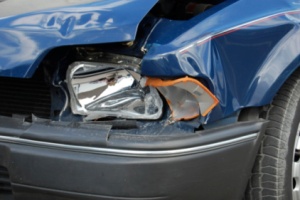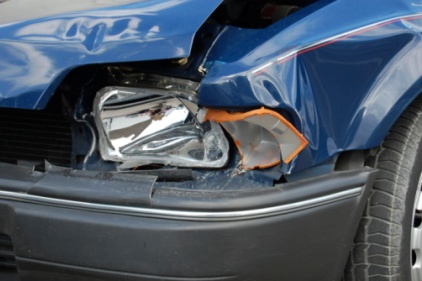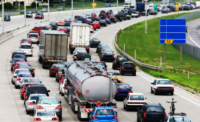 The U.S. Department of Transportation's National Highway Traffic Safety Administration (NHTSA) has released a new study that underscores the high economic toll and societal impact of motor vehicle crashes in the United States. The price tag for crashes comes at a heavy burden for Americans at $871 billion in economic loss and societal harm. This includes $277 billion in economic costs – nearly $900 for each person living in the United States based on calendar year 2010 data — and $594 billion in harm from the loss of life and the pain and decreased quality of life due to injuries.
The U.S. Department of Transportation's National Highway Traffic Safety Administration (NHTSA) has released a new study that underscores the high economic toll and societal impact of motor vehicle crashes in the United States. The price tag for crashes comes at a heavy burden for Americans at $871 billion in economic loss and societal harm. This includes $277 billion in economic costs – nearly $900 for each person living in the United States based on calendar year 2010 data — and $594 billion in harm from the loss of life and the pain and decreased quality of life due to injuries.
"While the economic and societal costs of crashes are staggering, today's report clearly demonstrates that investments in safety are worth every penny used to reduce the frequency and severity of these tragic events," said U.S. Secretary Anthony Foxx.
NHTSA's new study, The Economic and Societal Impact of Motor Vehicle Crashes, 2010 cites several behavioral factors as contributing to the huge price-tag of roadway crashes based on the 32,999 fatalities, 3.9 million non-fatal injuries, and 24 million damaged vehicles that took place in 2010. Key findings include:
- Drunk Driving: Crashes caused by drivers under the influence of alcohol accounted for 18 percent of the total economic loss due to motor vehicle crashes and cost the nation $49 billion, an average cost of $158 for every person in the U.S. Including lost quality of life, these crashes were responsible for $199 billion or 23 percent of the overall societal harm caused by motor vehicle crashes. Over 90 percent of these costs occurred in crashes involving a drunk driver with a blood alcohol concentration (BAC) of .08 or higher.
- Speeding: Crashes involving a speeding vehicle traveling over the posted speed limit or too fast for conditions accounted for 21 percent of the total economic loss and cost the nation $59 billion in 2010, an average cost of $191 for every person in the U.S. Including lost quality of life, these crashes were responsible for $210 billion or 24 percent of the overall societal harm caused by motor vehicle crashes.
- Distraction: Crashes involving a distracted driver accounted for 17 percent of the total economic loss and cost the nation $46 billion in 2010, an average cost of $148 for every person in the U.S. Including lost quality of life, these crashes were responsible for $129 billion or 15 percent of the overall societal harm caused by motor vehicle crashes.
- Pedestrians and Bicyclists: Crashes involving pedestrians and bicyclists accounted for 7 percent of the total economic loss and cost the nation $19 billion in 2010. Including lost quality of life, these crashes were responsible for $90 billion or 10 percent of the overall societal harm caused by motor vehicle crashes.
- Seatbelts: Seatbelt use prevented $69 billion in medical care, lost productivity, and other injury related costs. Conversely, preventable fatalities and injuries to unbelted occupants accounted for 5 percent of the total economic loss and cost the nation $14 billion in 2010. Including lost quality of life, failure to wear seatbelts caused $72 billion or 8 percent of the overall societal harm caused by motor vehicle crashes.
| Factors contributing to the price tag include productivity losses, property damage, medical and rehabilitation costs, congestion costs, legal and court costs, emergency services, insurance administration costs, and the costs to employers. |
The economic cost of motor vehicle crashes in the U.S. is the equivalent of 1.9 percent of the $14.96 trillion Gross Domestic Product (GDP) in 2010. Factors contributing to the price tag include productivity losses, property damage, medical and rehabilitation costs, congestion costs, legal and court costs, emergency services, insurance administration costs, and the costs to employers, among others. Overall, nearly 75 percent of these costs are paid through taxes, insurance premiums, and congestion related costs such as travel delay, excess fuel consumption, and increased environmental impacts. These costs, borne by society rather than individual crash victims, totaled over $200 billion.
View the full report: The Economic and Societal Impact of Motor Vehicle Crashes, 2010



